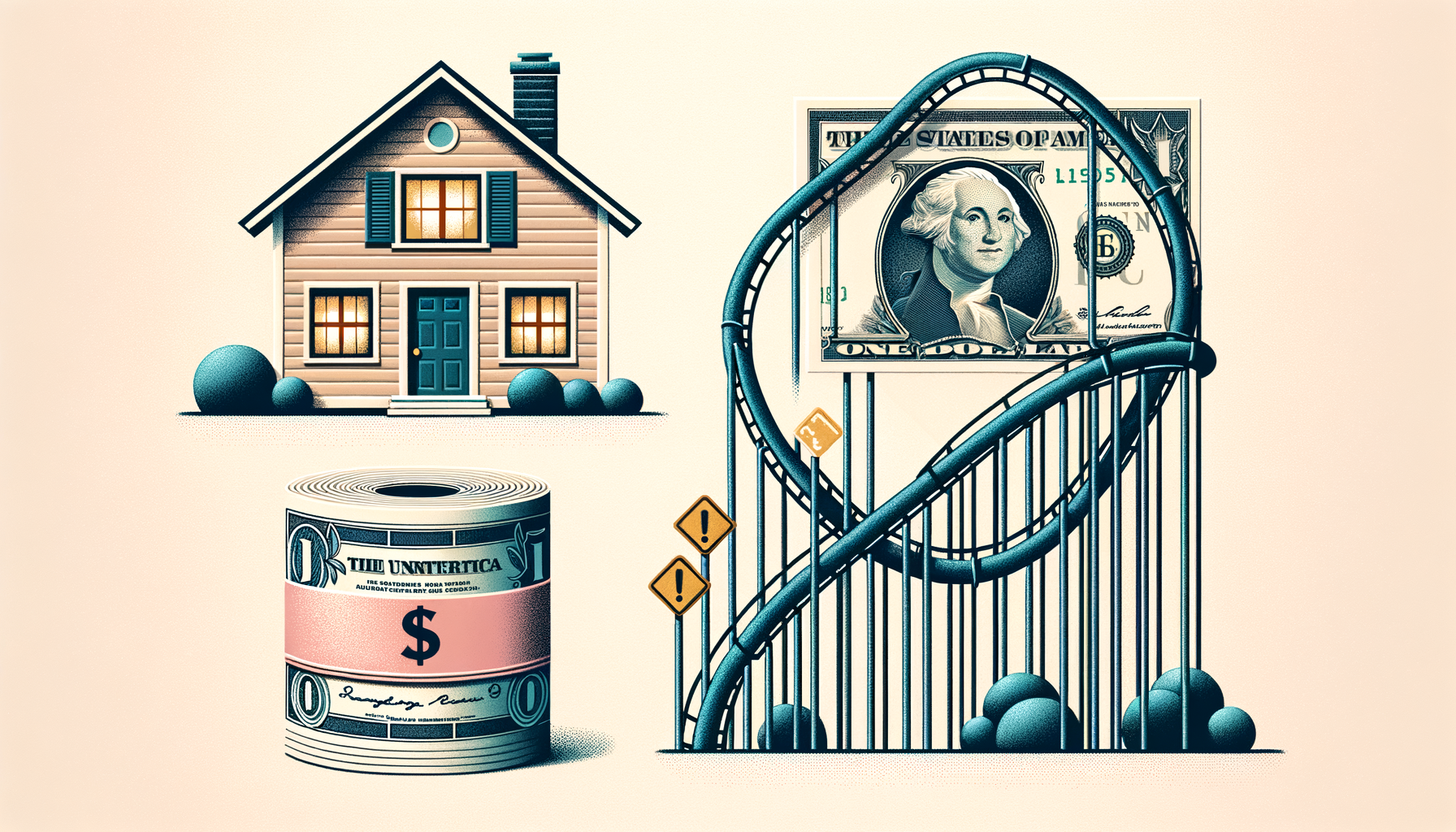“Unraveling the Dynamics of Mortgage Rates – A Deep Dive into the 2024 Trends”
Understanding the dynamics of mortgage rates can be crucial for anyone looking to buy a home, refinance their existing mortgage, or simply stay informed about their investments. Mortgage rates are influenced by a range of economic variables, and keeping track of these changes can help you make more informed financial decisions.
### What Are Mortgage Rates?
Mortgage rates are the interest rates you pay on the loan you take out to purchase a property. This rate will determine your monthly mortgage payment and the total amount you end up paying for your home. The rate you receive can vary based on several factors, including economic conditions, your credit score, loan type, and the overall market demand for mortgages.
### Factors Influencing Mortgage Rates
1. **Federal Reserve Policies**: The Federal Reserve (Fed) plays a critical role in the control of monetary policy, which has a direct impact on mortgage rates. When the Fed adjusts interest rates, it influences borrowing costs. For instance, if the Fed raises the federal funds rate, borrowing becomes more expensive, and mortgage rates generally increase.
2. **The Bond Market**: Mortgage rates are closely tied to the movements in the bond market, particularly the yields on U.S. Treasury notes. Lenders use these yields as a benchmark for setting the rates on mortgage loans. When bond yields rise, mortgage rates tend to follow suit because lenders need to make the loans they offer attractive to investors.
3. **Economic Indicators**: Economic data such as employment rates, GDP growth, and consumer spending also affect mortgage rates. Positive indicators that the economy is growing can lead to higher mortgage rates, while signs of economic slowdown can lead to lower rates.
4. **Global Economic Events**: Events around the world can also impact U.S. mortgage rates. For instance, if international investors view the U.S. as a safe haven, there might be more demand for U.S. bonds, driving up prices but pushing down yields and mortgage rates.
5. **Housing Market Conditions**: The supply and demand of homes in the market can also affect mortgage rates. If there’s high demand for homes, lenders can afford to increase rates without losing potential customers.
### Current Trends in Mortgage Rates
As of now, we are witnessing fluctuating mortgage rates attributed to various global and local economic stresses. Recent data has shown a trend where rates have been on the rise following a period of historically low rates, largely based on reactions from the bond market and Fed policy adjustments.
### Fixed-Rate vs. Adjustable-Rate Mortgages
When choosing a mortgage, one of the primary decisions you’ll make is whether to opt for a fixed-rate or adjustable-rate mortgage (ARM).
– **Fixed-Rate Mortgages**: This type of mortgage locks in your interest rate for the duration of your loan, which means your monthly payment remains the same, making budgeting easier over the long term. This stability comes particularly in handy during periods when interest rates are low.
– **Adjustable-Rate Mortgages**: ARMs typically offer lower initial rates compared to fixed-rate mortgages. However, after a set period, the rate adjusts annually based on market conditions. This can be beneficial when rates go down, but risky if rates go up.
### How to Get the Best Mortgage Rate
Getting the best mortgage rate can potentially save you thousands of dollars over the life of your loan. Here are some strategies to secure a better rate:
1. **Improve Your Credit Score**: Lenders use your credit score as a major factor in determining your mortgage rate. Higher scores usually earn lower rates. Aim to keep your credit score above 720 to get the most competitive rates.
2. **Consider Your Loan Term**: Shorter loan terms like 15 years usually have lower rates than 30-year loans but come with higher monthly payments.
3. **Make a Larger Down Payment**: Putting down a substantial amount reduces the lender’s risk, which can result in a lower rate. Aim for at least 20% down to avoid private mortgage insurance (PMI) as well.
4. **Shop Around**: Don’t just accept the first rate you’re offered. Check with multiple lenders, including banks, credit unions, and online lenders, to find the best rate.
5. **Timing Your Application**: Keep an eye on economic trends and apply for a mortgage when rates are low. Following the news on economic indicators such as Fed rate changes or major economic reports can guide you on timing.
6. **Locking In Rates**: When you find a good rate, consider locking it in with your lender. A rate lock ensures your rate won’t increase before you close your loan.
### Refinancing
Refinancing your mortgage can be another avenue to reduce your interest rate. If mortgage rates drop below your current rate, refinancing can lower your monthly payment and decrease the amount of interest you pay over the life of the loan. However, be sure to account for the closing costs associated with refinancing to ensure it’s a financially beneficial move.
### The Future Outlook
Predicting where mortgage rates are headed is tricky and depends on numerous factors including Fed policy, inflation rates, and global economic conditions. As we move forward, monitoring these key influencers will be crucial in anticipating rate movements.
### Conclusion
Whether you’re buying a home, refinancing, or simply keeping an eye on your investments, understanding the factors that influence mortgage rates and staying informed about current trends can help you make smarter financial decisions. By strategically managing your credit, considering various mortgage options, and timing your applications, you can take control of your financial future in the housing market.

